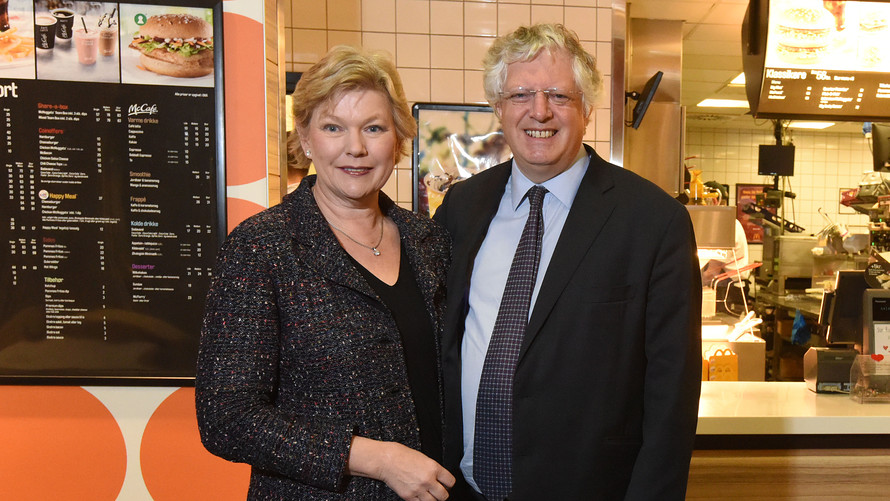The Ministry of Defence (MOD) Married Quarters estate sale in the UK has been a subject of significant interest and controversy since its inception in 1996. This comprehensive overview will analyze the background, recent developments, and implications of this large-scale property transaction, highlighting its significance for military housing, public finances, and government asset management. In turn highlighting many key factors which are always on interest to both auction and off market real estate investors.
Background of the Sale
The MOD Married Quarters estate sale was a landmark transaction that took place in November 1996. In this deal, the Ministry of Defence sold the majority of its married quarters estate in England and Wales to Annington Property Limited, a private company. commonslibrary.parliament.uk/research-briefings/ palaceauctions.com/palace-auctions-about-us
The sale involved over 55,000 residential properties, making it one of the largest property transactions in UK history.
Key Features of the Original Sale:
- Sale and Leaseback Structure: The MOD sold the properties but continued to lease them back from Annington Property Limited.
- Long-term Lease Arrangement: The MOD granted 999-year head leases on these properties, allowing Annington to retain ownership while the MOD continued to use them for housing military personnel.
- Financial Terms: The initial sale price was £1,662 million, with the MOD committing to nearly £200 million in annual rental bills.
Recent Developments and Conclusion
The conclusion of the MOD Married Quarters estate sale is still an evolving situation, with recent developments indicating a potential shift in the MOD’s strategy:
- Early Consideration of Buyback: The MOD is currently exploring the possibility of buying back thousands of homes it sold in the 1990s. This move is driven by the substantial annual leasing costs, which currently exceed £178 million. publications.parliament.uk
- Withdrawn Offer: A significant development was the withdrawal of a £105 million offer by a firm backed by billionaire Guy Hands. This offer was contingent on the MOD abandoning its plans to regain ownership of the properties, indicating ongoing negotiations and strategic decisions being made by the MOD.
- Shift in Policy: The potential buyback represents a significant shift in policy, aiming to address criticisms of the original sale and improve housing availability for military families.
- The latest development: In the latest and likely final development in the long running deal. “Terra Firma’s sale of 36,000 properties has agreed to end it’s legal fight with government over recent housing reforms.
The property company linked to Guy Hands has agreed to sell 36,000 military homes to the UK’s Ministry of Defence for almost £6bn, signaling an end to a long-running battle between the billionaire and the government.

Property for sale by Auction A man and woman in formal attire stand together smiling in front of a menu board at a fast-food restaurant, akin to the comprehensive overview of choices on display. The background reveals a bustling kitchen area and illuminated menu displays. Presented by Palace Auctions Annington will hand over its 999-year lease on the Married Quarters Estate to the MoD and receive £5.99bn in return – almost twice as much as Hands’s company Terra Firma paid for Annington more than a decade ago, but less than the £8bn the homes were valued at last year.
The sale ends court proceedings brought by Annington over planned housing reforms. In September, fight with the UK government to the European court of human rights over fears it could lose significant sums as a result of the new Leasehold and Freehold Reform Act. It also launched a challenge in the high court on the same ground.
Significance and Implications
The MOD Married Quarters estate sale and its ongoing conclusion have far-reaching implications:
1. Financial Impact
The original sale has been widely criticized for being financially disadvantageous to the MOD and taxpayers. Reports indicate that the MOD has lost billions of pounds due to this arrangement. The National Audit Office highlighted that the MOD missed out on significant financial returns due to the terms of the sale.
2. Housing Quality and Availability
The sale has been linked to declining standards in service housing. Satisfaction with the quality of service family accommodation has remained low, with reports indicating that the MOD has not prioritized housing as it should.
The government hopes that the buyback could be seen as an attempt to address these issues and improve housing conditions for military families.
3. Public Asset Management
This case highlights just some of the complexities and potential pitfalls of large-scale public asset sales. The ongoing discussions about buying back the properties suggest a reevaluation of how public assets, particularly those critical to national services like military housing, should be managed.
4. Long-term Financial Planning
The MOD faces ongoing challenges related to this sale, including a high vacancy rate of around 21% in the Annington estate. This means the MOD is paying rent on empty properties, exacerbating the financial burden.
5. Public and Political Scrutiny
The sale and buy back has been described as “disastrous” for taxpayers, attracting significant public and political scrutiny. The Public Accounts Committee has criticized the deal, and there are ongoing discussions about renegotiating terms to mitigate further financial losses.
Valuation and Pricing Considerations
An interesting aspect of the sale is the concept of “75% Open Market Value.” While not explicitly mentioned in the context of the MOD sale, this pricing strategy has significant implications:
- Discounted Sale Price: Selling at 75% of the open market value implies a 25% discount from the property’s estimated full market value. practicallaw.thomsonreuters.com
- Strategic Implications: Such pricing could be a strategic decision to expedite sales or meet specific financial objectives. However, it also raises questions about the potential undervaluation of public assets.
- Market Impact: This pricing strategy could influence future property valuations in the area and set precedents for similar transactions.
Conclusion
The MOD Married Quarters estate sale and its ongoing conclusion represent a complex and significant case study in public asset management, military housing policy, and long-term financial planning. The original sale in 1996 has had lasting implications for military housing in the UK, affecting both financial outcomes and the quality of accommodation available to service families.
The buyback by the MOD signifies a recognition of the challenges posed by the original sale and an attempt to rectify its long-term consequences.
This evolving situation continues to be a subject of debate highlighting the importance of careful consideration in large-scale public asset transactions and the need for flexibility in addressing unforeseen long-term consequences.
As the situation continues to develop, to completion it will likely have lasting impacts on military housing policy, public sector asset management, and the approach to public-private partnerships in the UK.
The outcome of these negotiations and decisions will be closely watched by policymakers, military families, and the public alike, serving as a crucial lesson in the management of public assets and the long-term implications of such significant transactions.



